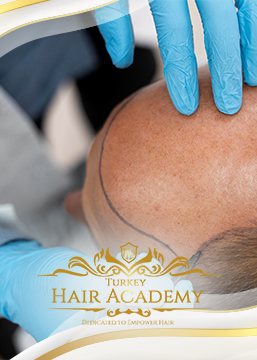
Are you planning to do hair transplants? The hairline is one of the most important elements in making your hair transplant look natural. In this case, the work of the specialists of this artistic transplant consists in creating a frontal line which approaches the natural one. The purpose of this article is to explain how to do this?
How do you recognize an original front line?
After a baldness, the loss of hair in the frontal line can look really ugly. This is why aestheticians perform this type of transplant to give victims the opportunity to create an artificial hairline. It is important to note that the natural hairline does not draw a straight line. It is rather a part where the hair seems to be more asymmetrical.
From this line, the volume of the hair usually regresses. After the operation, if a really uniform line is perceived, the graft will be immediately recognized as artificial. Therefore, the aesthetician must be aware of this irregularity of the hairline in order to create an identical one. For this reason, it is essential to use competent professionals who are able to respect this detail concerning the hairline, without forgetting the scar.
Proportion, a key to successful hair transplantation
To perform a hair transplant in the frontal line, the specialists use the hair above the nape of the donor’s neck. Because of the thinness of the hair on this part, it will guarantee a natural look. Apart from that, the calculation of the proportion of the face is not to be neglected. Indeed, a good proportion gives you a younger age and vice versa. Thus, it is necessary to work well on this proportion to have the expected result.
For a well-proportioned face, it is necessary to respect the measurement of the three distinct zones.
- The first is from the transplant area to the top of the eyebrow.
- Then the second area is between this upper edge of the eyebrow and the part below the nose.
- Finally, the last one starts from this lower part of the nose to the chin.
If we refer to the universal standard of aesthetics, the distance between these different areas should respect the following measures: 6.8 cm for the first, 6.55 cm for the second and 6.96 cm for the last part, which gives about 20.3 cm. However, for a low implantation, the distance does not respect this measure, but the first zone is 5 to 8 cm.
For beauty ambassadors like Hollywood actors, we see this equality in the proportion of their face. Thus, the best face type manifests a balance between the proportion of these different parts.
As for the orientation of the hair growth on the hairline, doctors no longer start from a perpendicular line, but decline on a degree of 15 to 30 degrees to give the most natural effect.
How to draw a natural frontal line
The frontal line is the hairline at the forehead. It can be recreated according to the patient’s preferences and certain criteria.
The creation of a natural hairline is the most important goal in hair transplantation. This hairline must mimic a natural hairline. Of course, at 25 and 60 years of age, you do not have the same hairline.
What does a natural front line look like?
In nature, the hairline is not linear at all. In reality, it is a transition zone with an irregular border in which the hair becomes progressively denser. This border contains peaks and valleys of varying heights. The spacing between the peaks and valleys also varies, as does the density of the hair.
A natural-looking, well-placed hairline properly proportions our face. This is what allows us to reflect our age, and the lack of proportion makes us look older. The beauty of the face depends on these proportions. The vertical height of the face can be evaluated by dividing it into three thirds. In an ideal face, these three thirds are equal.
Some definitions
- Upper third: the distance between the hairline and the upper edge of the eyebrows.
- Middle third: the distance between the upper edge of the eyebrows and the sub-nasal point.
- Lower third: the distance between the sub-nasal point and the tip of the chin.


